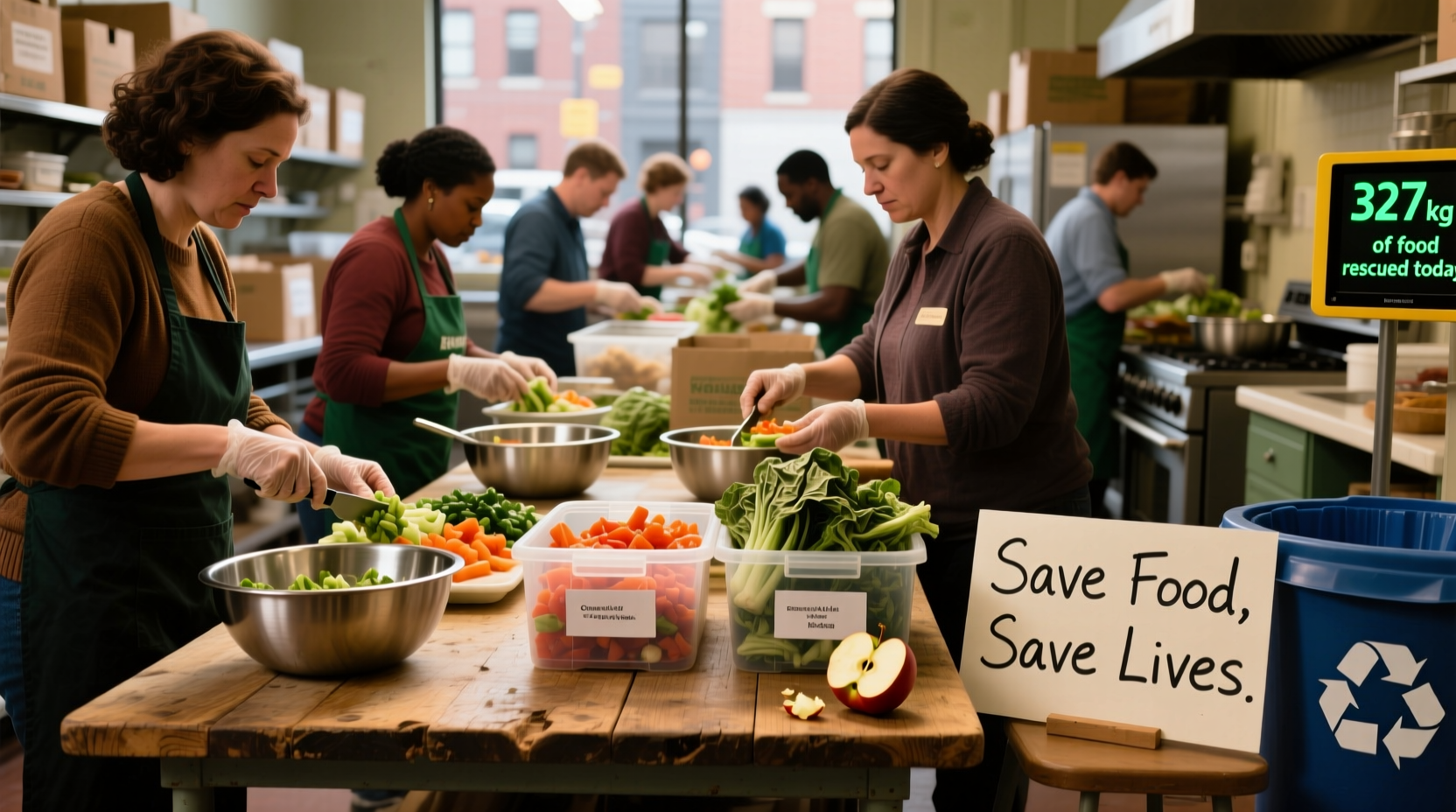Food waste represents one of the most solvable environmental and economic challenges of our time. Globally, approximately 1.3 billion tons of food gets wasted annually—equivalent to one-third of all food produced for human consumption according to the United Nations Food and Agriculture Organization. In the United States alone, the USDA estimates that 30-40% of the food supply goes uneaten, representing roughly $408 billion in wasted food each year. The environmental impact is equally staggering, with food waste accounting for 8-10% of global greenhouse gas emissions.
Understanding the Food Waste Timeline
Food waste patterns have evolved dramatically over the past century. Traditional societies operated with minimal waste through preservation techniques and nose-to-tail cooking practices. The industrialization of food systems introduced standardized packaging, strict cosmetic standards, and complex supply chains that dramatically increased waste at every stage. The EPA's Food Recovery Hierarchy shows how our approach to managing surplus food has shifted from simple disposal toward prevention, recovery, and recycling.
| Region | Annual Food Waste per Capita | Primary Waste Sources | Reduction Initiatives |
|---|---|---|---|
| North America | 298 lbs (135 kg) | Households (43%), Retail (21%) | USDA-EPA 2030 Food Loss Waste Reduction Goal |
| Europe | 216 lbs (98 kg) | Households (53%), Processing (19%) | EU Farm to Fork Strategy |
| Asia-Pacific | 165 lbs (75 kg) | Production (40%), Retail (22%) | UNEP Food Waste Index Reporting |
Smart Grocery Shopping Strategies That Prevent Waste
Effective food waste reduction begins before you even step into the grocery store. The most successful households implement these evidence-based shopping techniques:
- Master the meal planning cycle - Create flexible weekly menus based on what you already have at home, then build shopping lists around those plans. WRAP's research shows households that meal plan waste 15-20% less food than those who don't.
- Understand date labeling - "Best by," "sell by," and "use by" dates often confuse consumers. The USDA clarifies that except for infant formula, these dates indicate quality rather than safety. Learn to trust your senses—smell, sight, and taste—when determining food safety.
- Shop your pantry first - Conduct a weekly inventory of your existing ingredients before shopping. This simple practice prevents duplicate purchases and helps you identify items nearing expiration.
- Buy imperfect produce - "Ugly" fruits and vegetables often get discarded despite being perfectly edible. Many retailers now offer discounted imperfect produce, helping reduce farm-level waste.

Optimal Food Storage Techniques by Category
Proper storage dramatically extends food freshness. Different food categories require specific approaches:
Produce Preservation
Many fruits emit ethylene gas that accelerates ripening in nearby produce. Store ethylene-producing items like bananas, avocados, and tomatoes separately from ethylene-sensitive items like leafy greens and berries. The University of California's Agricultural Department confirms that proper storage can extend produce shelf life by 30-50%.
- Leafy greens - Wash, dry thoroughly, and store in airtight containers with a paper towel to absorb moisture
- Herbs - Treat like flowers—trim stems and place in water, covering loosely with a plastic bag
- Root vegetables - Store in a cool, dark place away from potatoes (which emit gases that cause sprouting)
Dairy and Protein Management
Freeze portions of meat, poultry, and dairy products before they reach their expiration dates. The FoodKeeper app from USDA provides specific storage timelines for hundreds of food items. Portioning before freezing prevents having to thaw more than you need.
Creative Meal Planning for Zero-Waste Cooking
Transform potential waste into delicious meals with these practical approaches:
- Implement "clean-out-the-fridge" nights - Designate one evening weekly to use remaining ingredients. This habit not only reduces waste but sparks culinary creativity.
- Master the art of component cooking - Prepare versatile base ingredients (grains, roasted vegetables, proteins) that can be mixed and matched throughout the week.
- Embrace "root-to-stem" cooking - Use vegetable peels for stocks, broccoli stalks in stir-fries, and citrus zest before juicing. Chef Dan Barber's WastED project demonstrates how professional kitchens transform scraps into gourmet dishes.
- Track your waste patterns - Keep a simple log of what gets thrown away and when. This reveals specific problem areas to address.
Context-Specific Waste Reduction Strategies
Effective food waste reduction requires understanding your specific circumstances:
- Single-person households - Focus on portion control and freezing techniques. Buy smaller quantities or divide bulk purchases immediately.
- Families with children - Implement "build-your-own" meal formats that accommodate different preferences while using common ingredients.
- Busy professionals - Invest time in weekly meal prep focused on versatile components rather than complete meals.
- Seasonal considerations - Adjust strategies based on seasonal abundance—preserve summer produce for winter use through freezing or canning.
Community Solutions That Amplify Impact
Individual efforts gain momentum when connected to community initiatives:
- Food sharing networks - Apps like Olio connect neighbors to share surplus food. Research from the University of Edinburgh shows these networks can reduce household food waste by an additional 12%.
- Composting programs - Even with excellent prevention, some waste is inevitable. Municipal composting programs or backyard systems return nutrients to the soil.
- Support food recovery organizations - Groups like Feeding America redirect surplus food to those in need. Donating excess food provides tax benefits while addressing food insecurity.
Measuring Your Progress and Staying Motivated
Sustainable change requires tracking and celebrating successes:
- Conduct monthly waste audits by weighing discarded food
- Calculate your savings using EPA's Food Waste Reduction Calculator
- Share your successes with friends and family to create accountability
- Gradually implement new techniques rather than attempting complete overhauls











 浙公网安备
33010002000092号
浙公网安备
33010002000092号 浙B2-20120091-4
浙B2-20120091-4